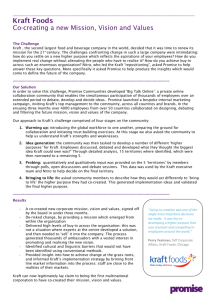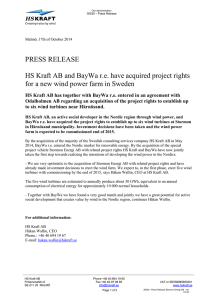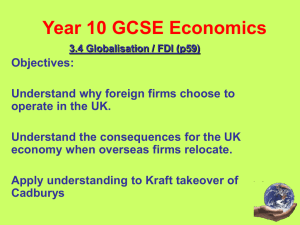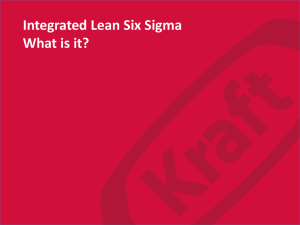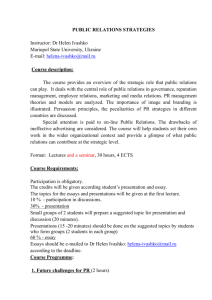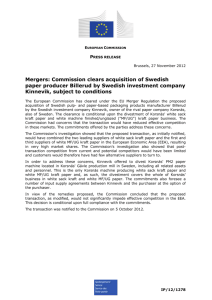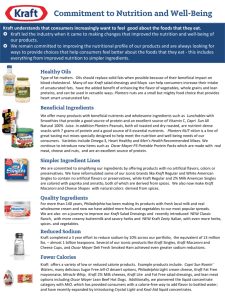Kraft to Curb Snack-Food Advertising
advertisement
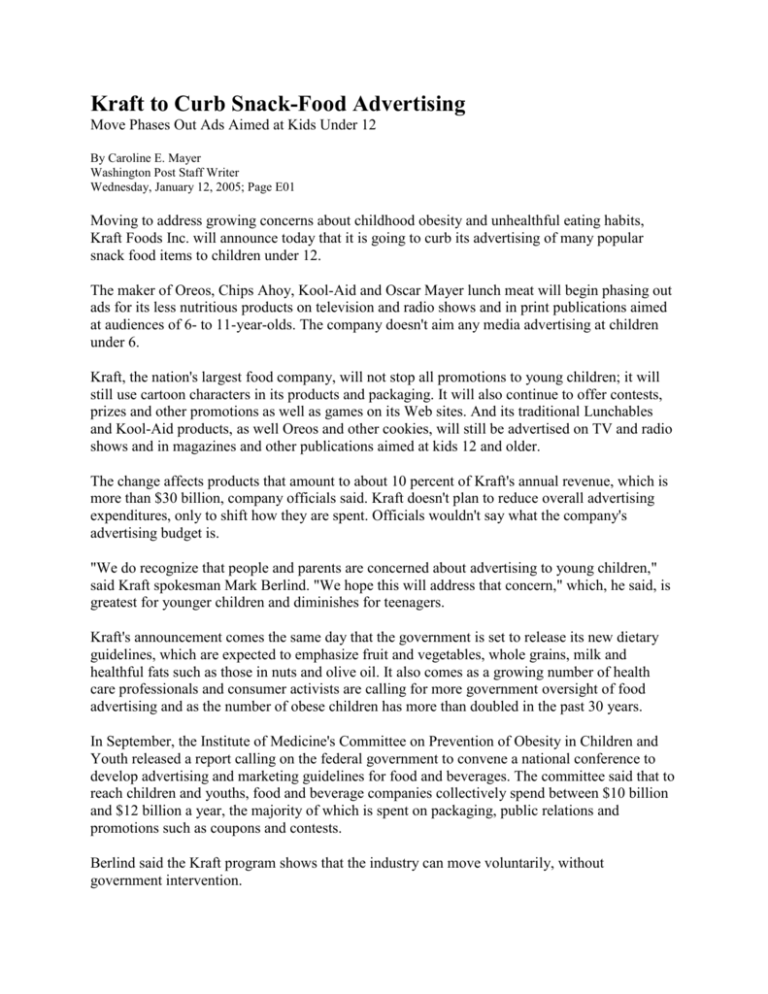
Kraft to Curb Snack-Food Advertising Move Phases Out Ads Aimed at Kids Under 12 By Caroline E. Mayer Washington Post Staff Writer Wednesday, January 12, 2005; Page E01 Moving to address growing concerns about childhood obesity and unhealthful eating habits, Kraft Foods Inc. will announce today that it is going to curb its advertising of many popular snack food items to children under 12. The maker of Oreos, Chips Ahoy, Kool-Aid and Oscar Mayer lunch meat will begin phasing out ads for its less nutritious products on television and radio shows and in print publications aimed at audiences of 6- to 11-year-olds. The company doesn't aim any media advertising at children under 6. Kraft, the nation's largest food company, will not stop all promotions to young children; it will still use cartoon characters in its products and packaging. It will also continue to offer contests, prizes and other promotions as well as games on its Web sites. And its traditional Lunchables and Kool-Aid products, as well Oreos and other cookies, will still be advertised on TV and radio shows and in magazines and other publications aimed at kids 12 and older. The change affects products that amount to about 10 percent of Kraft's annual revenue, which is more than $30 billion, company officials said. Kraft doesn't plan to reduce overall advertising expenditures, only to shift how they are spent. Officials wouldn't say what the company's advertising budget is. "We do recognize that people and parents are concerned about advertising to young children," said Kraft spokesman Mark Berlind. "We hope this will address that concern," which, he said, is greatest for younger children and diminishes for teenagers. Kraft's announcement comes the same day that the government is set to release its new dietary guidelines, which are expected to emphasize fruit and vegetables, whole grains, milk and healthful fats such as those in nuts and olive oil. It also comes as a growing number of health care professionals and consumer activists are calling for more government oversight of food advertising and as the number of obese children has more than doubled in the past 30 years. In September, the Institute of Medicine's Committee on Prevention of Obesity in Children and Youth released a report calling on the federal government to convene a national conference to develop advertising and marketing guidelines for food and beverages. The committee said that to reach children and youths, food and beverage companies collectively spend between $10 billion and $12 billion a year, the majority of which is spent on packaging, public relations and promotions such as coupons and contests. Berlind said the Kraft program shows that the industry can move voluntarily, without government intervention. Kraft's new marketing plan met with cautious praise by some of the critics of advertising aimed at children. "This is a really good step forward," said Margo G. Wootan, director of nutrition for the Center for Science in the Public Interest, which last week called on companies to stop marketing all junk food to children under 18. Wootan said the company still needs to "look at packaging, Web sites, contests, toy giveaways and other marketing which has a negative impact on children's eating habits." It also needs to stop using cartoon characters to sell its food, she said. "I say hooray, with one cautionary note," said Kelly D. Brownell, a psychology professor at Yale University. The question, Brownell said, is whether children will be able to distinguish an ad for Sugar-Free Kool-Aid from the rest of the Kool-Aid products. Under the new plan, the company will not advertise regular Kool-Aid drinks to young children. However, it will promote sugar-free Kool-Aid, which the company says fits its own nutritional better-for-you criteria because it is lower in sugar and calories. Similarly, most Oscar Mayer Lunchables will no longer be advertised, although specific ones, such as the Chicken Dunks Fun Pack, will be because they are relatively low in calories, fat, cholesterol and sodium. Berlind said the company intends to make sure that any ads directed at young children will "look and feel different" from those for their less healthful counterparts. The advertising restrictions will be phased in as contracts with media companies expire, but the company expects the change to be completed globally in 2006. Many food companies have been trying to address growing nutritional concerns for all parts of the population. Many are reducing the sugar content of products, such as cereal, while boosting the calcium and vitamin in other items, including snack foods. General Mills Inc. is boosting whole grains in all of its cereals, including Trix, Cocoa Puffs and other popular kids' cereal. General Mills and PepsiCo Inc. have also started highlighting their more healthful products by attaching special logos to products that are low in fat, high in fiber or have other nutritional benefits. Kraft today will announce plans to launch a similar labeling program this spring. © 2005 The Washington Post Company

